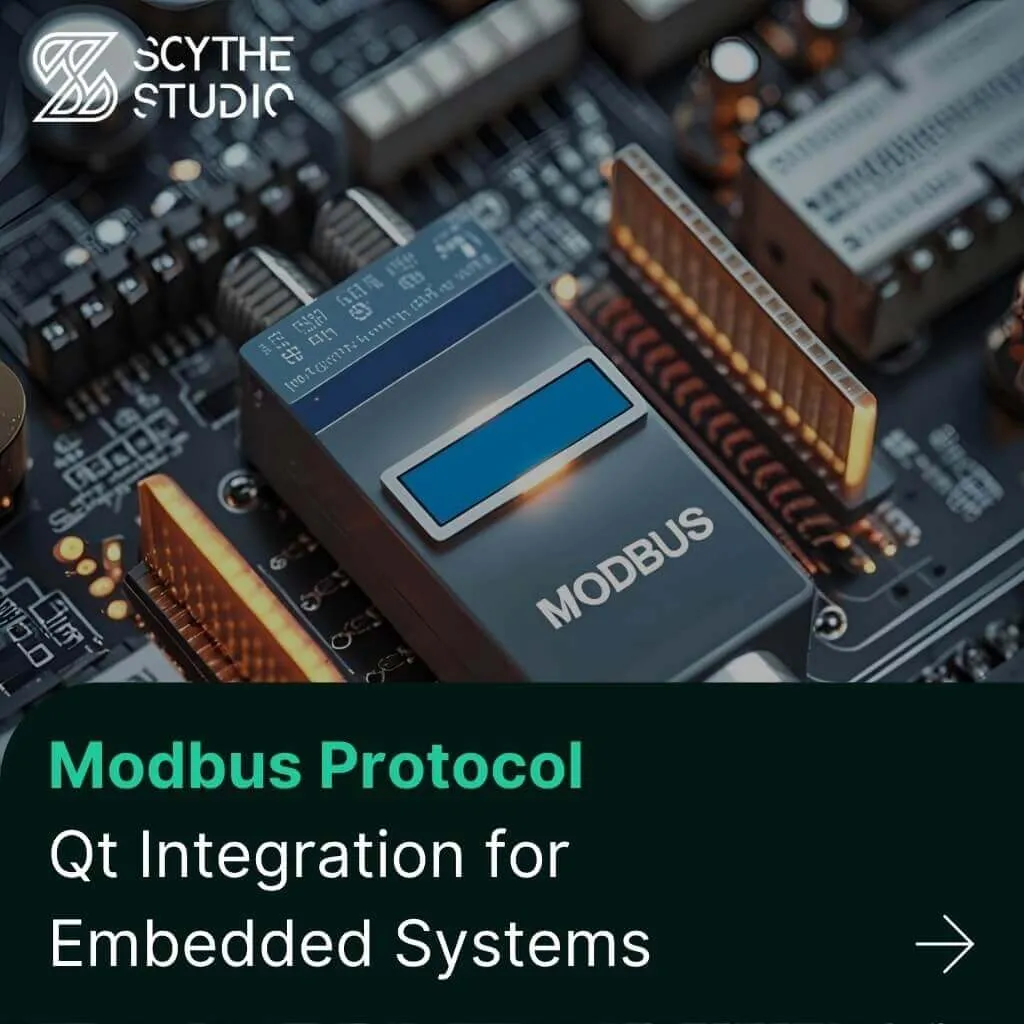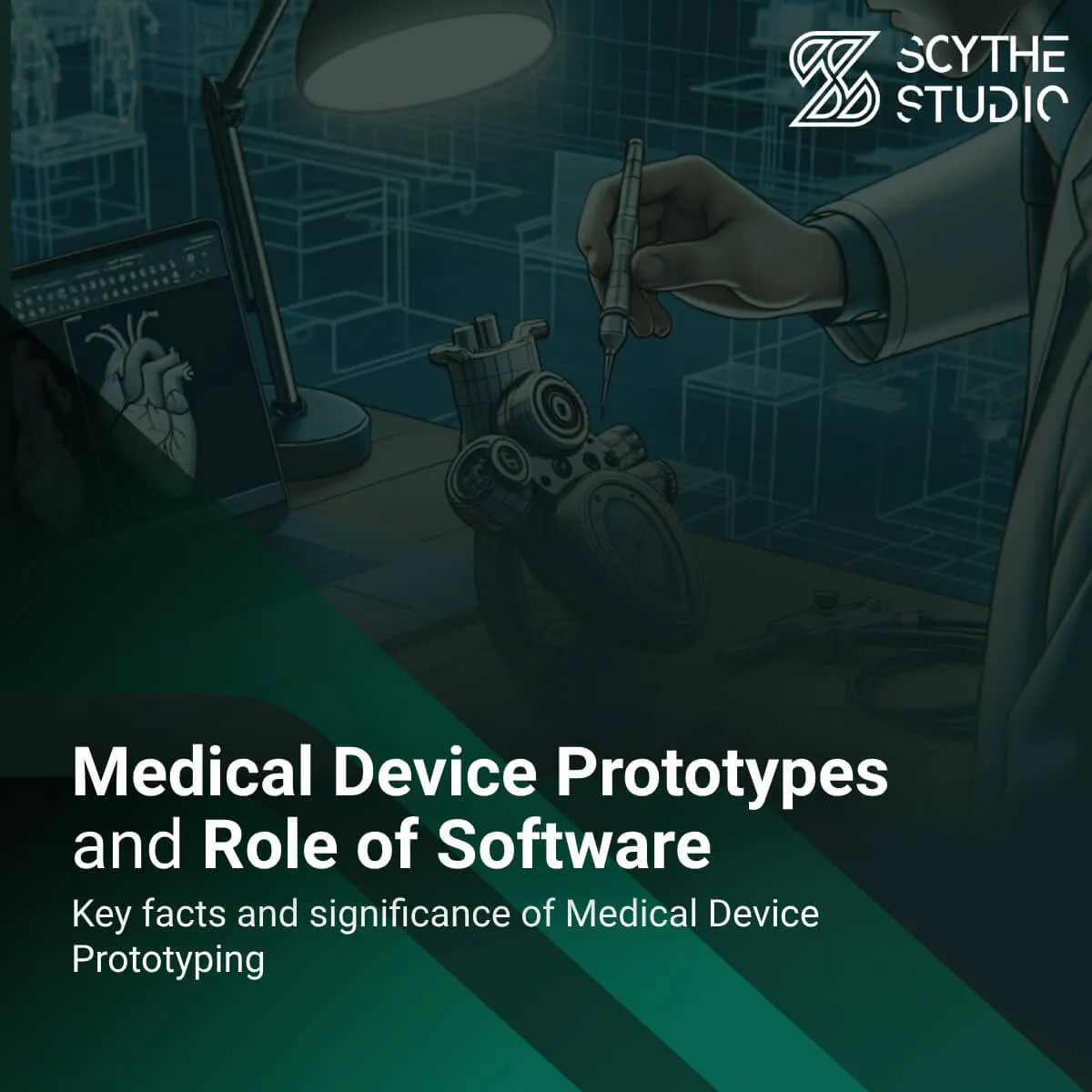
Modbus Protocol and Qt Integration for Embedded Systems
Technical managers in the embedded space often face a classic challenge: integrating industrial communication protocols into modern applications. One such […]

I wouldn’t lie when I say that a significant number of the projects carried out at Scythe Studio are related to the medical device industry. We have had the opportunity to develop software ranging from small medical measurement devices to advanced surgery planning applications – so both SaMD and SiMD (Software as Medical Device and Software in Medical Device). Our next blogpost will be dedicated to these topics, so I encourage you to keep an eye on our blog!
In each of these cases, however, medical device prototyping was an extremely important process. And it is this topic that I would like to address in today’s post. We’ll talk about the importance of medical device prototyping and the role that software plays in this stage of the project.
If you have additional questions, please feel free to take a look at our Medical Device Software Development section or make an appointment with us for a consultation.
Let’s start by discussing the most important things and terms related to medical device prototyping. this will build our knowledge base for further consideration about medical prototypes.

So let’s start prototyping!
A medical device encompasses a range of tools, from simple physical instruments to complex software applications, designed to aid in the diagnosis, treatment, prevention, and monitoring of diseases and medical conditions.
When focusing on the software side, a medical device can be any software or digital platform intended for medical purposes, such as diagnostic algorithms, health monitoring apps, or software-controlling medical equipment.
Of course, these are just examples, as newer and newer medical devices are emerging as technology develops!
Medical prototyping plays a pivotal role in the development and eventual success of medical technologies. Its significance is multifaceted, impacting not only the technical development but also the regulatory, user-centric, and economic aspects of medical device innovation. Here’s a deeper look into the key areas.
Prototyping enables rapid testing and refinement of concepts, allowing developers to explore a wide range of medical device design options and functionalities. By creating a tangible model of the medical device, engineers and designers can identify and address potential issues early in the development process, such as usability challenges, ergonomic factors, or technical limitations. This iterative process is critical in aligning the medical device design with actual clinical needs and user expectations, ensuring that the final product is both effective and user-friendly.
Prototyping provides essential confirmation of the medical device’s design, ensuring the theoretical design translates into a viable product. It validates the choice of materials, the manufacturing process, and compliance with regulatory standards. This stage is crucial for stakeholder engagement, securing intellectual property, and paving the way for successful production and market introduction.
Prototyping in medical device development is key for functional testing, offering a critical look at how a device performs under real-world conditions. This stage helps in identifying and fixing technical issues, ensuring the device meets its intended medical functions, safety, and regulatory standards.
It’s a crucial step, aiming at optimal performance and patient safety!
Prototyping also plays a vital role in improving a medical device’s usability by gathering feedback from users, such as healthcare professionals and patients. This input is invaluable for identifying usability issues and making iterative design improvements. The process ensures the final product is not only functional but also user-friendly, meeting the specific needs of its users and facilitating higher adoption rates.
 Advantages of medical device prototyping
Advantages of medical device prototyping
Prototyping Medical Devices is an intricate process that melds the realms of software development with sophisticated hardware engineering. This guide lays out the path for creating prototypes that are not only technologically advanced but also ready to meet the rigorous demands of the medical industry.
Of course, the process may vary from project to project, but the steps listed below are, shall we say, universal.
The first step in any device’s lifecycle is the birth of an idea. This stage involves brainstorming, identifying healthcare challenges, and conceptualizing solutions that can be developed into a functional device.
At this stage, we define things such as functional and non-functional requirements or create diagrams to help us organize our ideas.
Before diving deep into design and development, it’s crucial to understand the regulatory landscape. Researching standards early ensures that both the software and hardware components align with healthcare regulations, smoothing the path for future approvals.
In the medical industry, this is an extremely important step because many of these devices, if poorly designed and not compliant, can cause harm! So we need to make sure that our product will pass clinical trials.
Assessing the project’s viability from both technical and economic perspectives is next. We need to make sure that we can meet manufacturing capabilities. This step confirms the project’s scope and sets realistic expectations for the integration of software with hardware elements.
Here, a realistic approach is very important. It is very easy to get caught up in the spiral of “Oh such a feature is useful too!” 😅
Here, we focus on developing the software backbone of the medical concept prototype (or proof of concept prototype). Designing robust, secure, and scalable software architecture is critical. Prototyping then allows for iterative development, enabling enhancements in functionality, user interface, and overall reliability.
For deeper insights into selecting the appropriate technology stack, visit our post: How to Choose the Right Technology for Healthcare Software Development.
While our forte is software, integrating hardware is indispensable. This phase involves crafting and testing the electronic and mechanical components that will interact with our software, ensuring a seamless operation of the final device. If we are talking about hardware, cnc machining and and 3d printing have been very helpful in this phase recently 🤖.
Testing is multi-faceted, encompassing both software simulations and hardware in real-world scenarios. This rigorous evaluation aims to iron out any issues, ensuring the prototype meets all functional and regulatory requirements.
Such tests should be performed with due diligence and therefore be done regularly and documented properly.
Collecting feedback from end-users is invaluable. It provides insights into the device’s usability and effectiveness, guiding further multiple iterations to refine both the software and hardware aspects of the final prototype. Thanks to patient outcomes, we can polish our product!
The culmination of this process is a polished prototype, optimized for performance, user experience, and compliance with all necessary standards, ready for the steps toward regulatory approval and mass production. Final products can be called beta stage prototypes.
 Whole process of medical prototype creation
Whole process of medical prototype creation
Creating a medical device is a nuanced journey that demands expertise in both software development and hardware engineering. By intertwining these disciplines from the outset and incorporating rigorous testing and feedback, we pave the way for groundbreaking medical devices that are poised to transform healthcare.

Presentation of proof of concept is also challenging!
I hope I’ve managed to make you aware of the importance of the medical prototyping process. If you have any questions, feel free to contact me!
Let's face it? It is a challenge to get top Qt QML developers on board. Help yourself and start the collaboration with Scythe Studio - real experts in Qt C++ framework.
Discover our capabilities
Technical managers in the embedded space often face a classic challenge: integrating industrial communication protocols into modern applications. One such […]

Why is visualization so important in finance? First and foremost is clarity. Good visuals cut through complexity, making it easier […]

The C++ programming language came into existence in 1985, which makes it one of the most aged programming languages that are still being used nowadays. In spite of its maturity, it is continuously used in many companies and taught at universities. How does C++ look compared to other languages in 2023 and is it still worth your attention? Today we will try to answer exactly these questions.